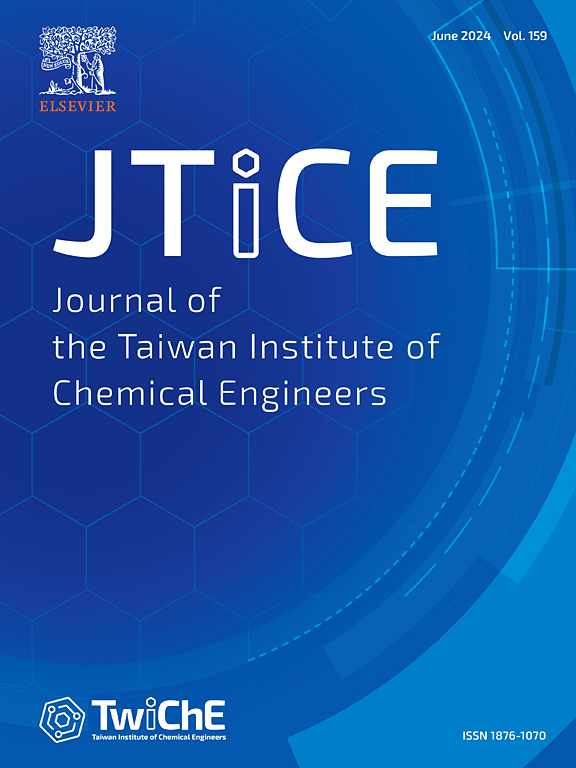Effect of Co doping on active oxygen species of CoxCe1-xOy mixed oxide catalysts derived from MOF materials for soot combustion
IF 5.5
3区 工程技术
Q1 ENGINEERING, CHEMICAL
Journal of the Taiwan Institute of Chemical Engineers
Pub Date : 2025-02-05
DOI:10.1016/j.jtice.2025.106003
引用次数: 0
Abstract
Background
Cerium-based materials have the potential to be used as catalysts for diesel particulate filters. The development of Cerium-based MOF derived catalysts is an important way to explore these materials for DPF applications.
Methods
In this work, CoxCe1-xOy catalysts were synthesized by calcining cobalt-cerium bimetallic MOF precursors. The prepared catalysts were characterized using XRD, Raman, SEM, N2 adsorption-desorption, XPS, H2-TPR, and O2-TPD, and tested for soot oxidation activity and performed DFT calculations.
Significant findings
Raman spectra analysis revealed that Co0.2Ce0.8Oy catalyst had a larger maximum half-width and was more likely to form oxygen defects. Compared with CeO2 catalyst, N2 adsorption-desorption results demonstrated that Co0.2Ce0.8Oy catalyst possessed a larger specific surface area (61.4 m2·g−1). XPS, H2-TPR, and O2-TPD characterizations indicated that Co0.2Ce0.8Oy catalyst possessed a higher content of active oxygen (45.2 %), a greater consumption amount of hydrogen (7.5 mmol·g⁻¹), and a larger total desorption amount of oxygen species (1.16 mmol·g⁻¹). Catalytic activity test results showed that Co0.2Ce0.8Oy catalyst exhibited better soot oxidation activity (T90 = 406 °C). DFT calculations demonstrated that Co0.2Ce0.8Oy catalyst had a larger surface energy (0.44 J/m2) and a smaller oxygen vacancy formation energy (2.26 eV).

求助全文
约1分钟内获得全文
求助全文
来源期刊
CiteScore
9.10
自引率
14.00%
发文量
362
审稿时长
35 days
期刊介绍:
Journal of the Taiwan Institute of Chemical Engineers (formerly known as Journal of the Chinese Institute of Chemical Engineers) publishes original works, from fundamental principles to practical applications, in the broad field of chemical engineering with special focus on three aspects: Chemical and Biomolecular Science and Technology, Energy and Environmental Science and Technology, and Materials Science and Technology. Authors should choose for their manuscript an appropriate aspect section and a few related classifications when submitting to the journal online.

 求助内容:
求助内容: 应助结果提醒方式:
应助结果提醒方式:


